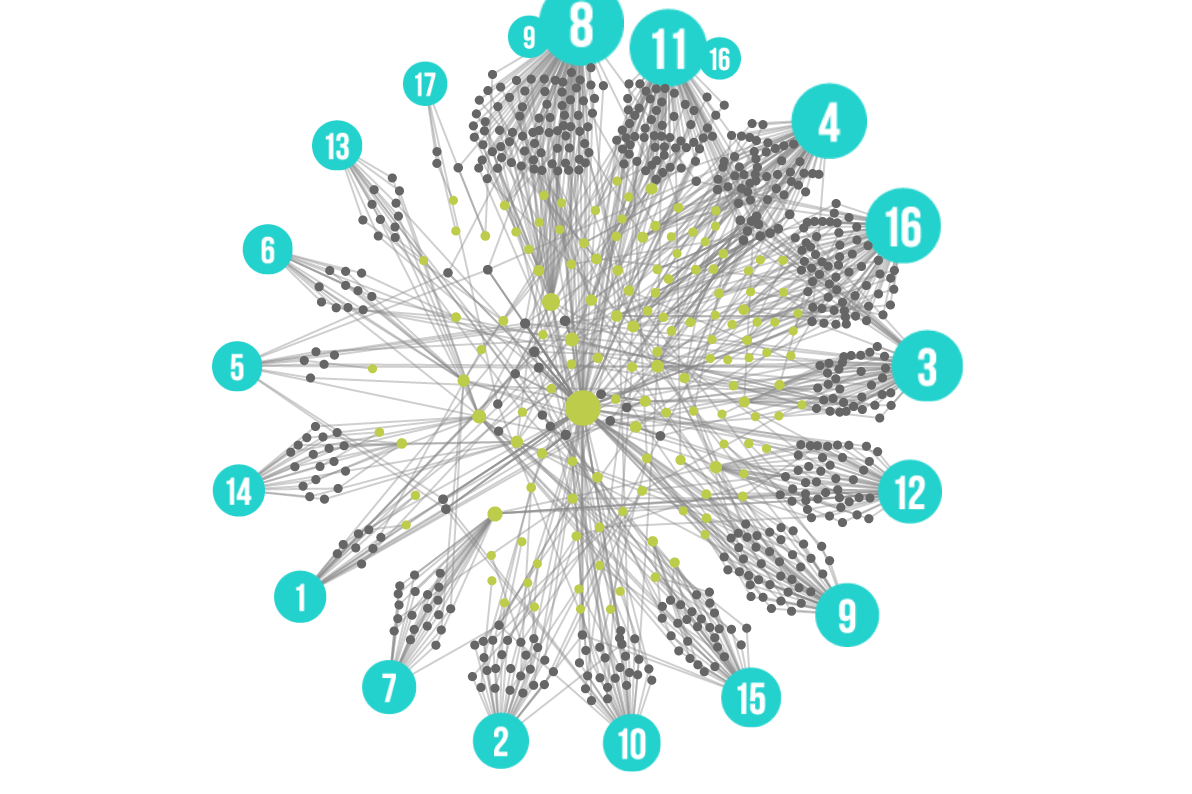The 17 Sustainable Development Goals (SDGs) aim to promote economic development, social inclusion, and ecological sustainability. Although all countries agreed to work towards achieving the SDGs by 2030, no country is on track. Recent assessments paint a bleak outlook: inequality is widening, hunger is on the rise, biodiversity is eroding at an alarming rate, climate change threatens all SDGs, and a pandemic is rampaging the world.
To accelerate impacts, the United Nations declared the 2020-2030 period a “Decade of Action”. All stakeholders are called on to contribute to the SDGs, but the private sector in particular was identified as being able to make a difference between complacency and action. The economic activities they undertake can advance, but also be detrimental to, the SDGs.
Defining interactions between economic activities and SDG targets
In societies, companies undertake numerous, highly heterogeneous types of economic activities. These activities sustain livelihoods and produce goods and services that help people attain a better life, but they also create negative externalities. Different types of economic activities thereby impact different SDGs. From the start of the SDG effort, the importance of ‘interaction-’, ‘linkages- or ‘nexus’-’ effects have been deemed vital for progress. Many research and knowledge-exchange efforts have been initiated: the Nexus community, SDG Interaction Knowledge Platform, LinkedSDG platform and the SDG Synergies approach. Most of these initiatives – as well as the related studies – concentrate on macro-economic or sector specific analyses. There is insufficient focus as well as evidence on how individual economic activities – as a proxy for corporate strategies – interact with the SDGs. This lack of evidence complicates the efforts of companies, governments, and investors to create smart SDG strategies that steer towards net positive impacts.
We have undertaken research to fill this gap. This research systematically reviews 876 articles, published between 2005 and 2019 and covering 420 economic activities (defined by the ISIC Rev. 4 classification), to synthesize the literature on the interface between individual economic activities and sustainable development impacts.
Moving forward
The research results identify the positive and negative interactions between individual and detailed economic activities and the topics defined by the SDGs’ underlying targets, as reported in the literature. At an overarching level, the findings reveal that economic activities bring ample opportunities for advancing SDGs. Most are sources of economic productivity (SDG 8) and drive industrialization (SDG 9) while many create and/or distribute goods and services that help people meet their basic needs (SDGs 2, 3, 4, 6, 7, 11). However, negative impacts are widespread, most prominently afflicting ecosystems (SDGs 14 and 15), driving climate change (SDG 13) and harming human health (SDG 3).
Yet these interactions vary widely across individual economic activities. Agriculture activities, for instance, feed the world, thereby having clear potential to help achieve SDG 2 (zero hunger). However, they also account for some 70% of water withdrawals globally which raises concerns for SDG 6 (water and sanitation), and the use of fertilizers and pesticides threatens SDGs 14 and 15 (life on land and below water).
As another example, electricity generation promotes SDG 9 (industrialization). But if electricity is generated through non-renewable sources, SDG 13 (climate action) is at risk, while SDG 3 (health and well-being) may be harmed due to air pollution. Estimates suggest that in China 15 million and in India 11 million years of life lost can be avoided by eliminating power generation emissions.
These findings can inform the creation of improved SDG strategies. Scientists and policy makers increasingly recognize that progress on the SDGs can be accelerated through a “nexus approach”. Recognizing that progress on one SDG can promote, but also be detrimental to, progress on another SDG, a nexus approach aims to manage the interactions between SDGs in order to advance multiple SDGs simultaneously and reduce the risk of trade-offs.
For example, eradicating hunger (SDG 2) improves health and well-being (SDG 3) and can help people escape poverty (SDG 1). Targeting these SDGs together, instead of treating them as isolated silos, brings opportunities for bigger impacts
The economic activities undertaken by organizations present a key lever for operationalizing this SDG-nexus. Economic activities drive positive and negative impacts on the SDGs, which are themselves entwined. Hence, there is an imperative to adopt a nexus approach to economic activities’ impacts on sustainable development, in order to promote the co-benefits of economic activities on SDGs and mitigate their trade-offs. The nexus approach not only deserves attention as part of policy agendas, but increasingly as an integral part of corporate strategies, for instance in the management of well-designed partnership portfolios.
The paper titled, ‘Towards nexus-based governance: defining interactions between economic activities and the Sustainable Development Goals (SDGs)’, is published in the peer-reviewed International Journal of Sustainable Development & World Ecology and can be accessed here (open access): https://doi.org/10.1080/13504509.2020.1768452
This article was authored by Jan Anton van Zanten, PhD researcher at Rotterdam School of Management, Erasmus University, and SDG Strategist at Robeco Institutional Asset Management, and Rob van Tulder, Full professor, International Business-Society Management at Rotterdam School of Management, Erasmus University, and Academic director Partnerships Resource Centre. Since 1 April 2020, Jan Anton van Zanten has been employed by Robeco, an asset management firm. The views expressed in this paper are not necessarily shared by Robeco.
